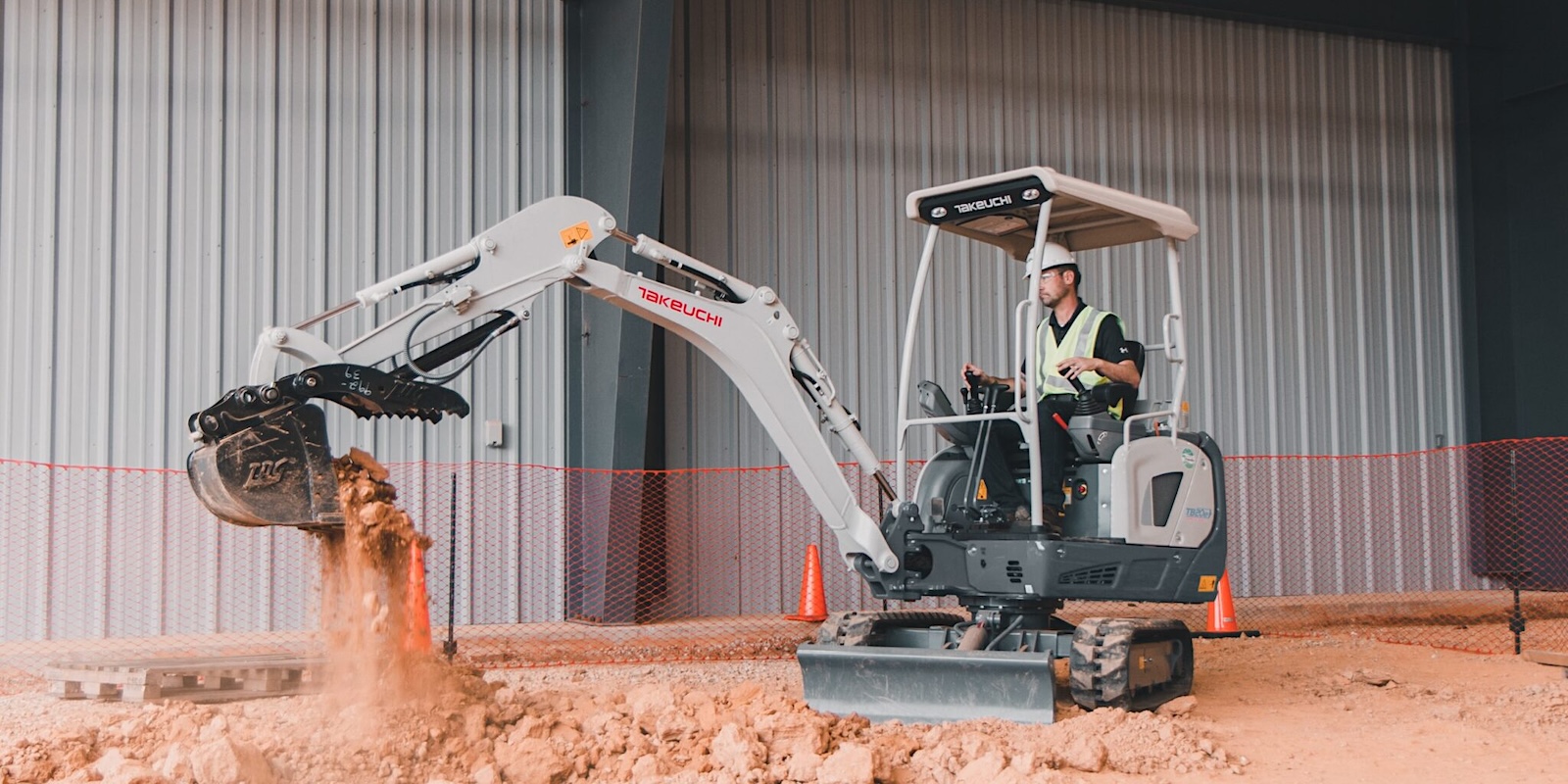
Australian equipment specialists Semco recently took delivery of their first Takeuchi TB20e, making it one of the first battery-powered compact excavators on the continent … but that’s not what makes it awesome.
Similar in size and performance to Takeuchi’s diesel-powered TB216 compact excavator, the TB20e is powered by lithium-ion battery that offers up to eight hours of continuous runtime. But the real innovation is this: when operators require additional runtime, they can plug the TB20e’s onboard charger into a power source and remain operational.
If you’re on a job site with grid power, that means the TB20e could (in theory) be kept working around the clock.
When grid power isn’t available or plugging in isn’t practical, an optional, off-board fast charger can charge the TB20e’s 24.7 kWh li-ion battery in less than four hours using 408v to 552v three-phase power. Two electric motors – one for drive and one for hydraulics – power the Takeuchi excavator as it gets things done.
Stuart Marriott, national product manager for Takeuchi Australia, says the Japanese manufacturer is committed to environmental stewardship, and sees the TB20e as a great place to help fleets start to decarbonize. “The new battery power excavator is designed to help our customers meet their own sustainability goals without sacrificing the performance and reliability they deserve and expect from Semco and Takeuchi.”
Electrek’s Take


Ever-increasing noise regulations, highly publicized corporate ESG goals, no-drip job sites, and strict emissions regulations are effectively forcing even the most hesitant manufacturers to start producing electric construction equipment. And, while Takeuchi isn’t a major player in the US, its clever use of grid power and a combination of on- and off-board chargers are features even the biggest manufacturers should take note of.
Now that I mention it, I think at least one major international construction company has had the same idea. Check out Volvo’s grid-connected material handler here.
SOURCE | IMAGES: Takeuchi Japan, via Earthmoving Equipment Magazine.
